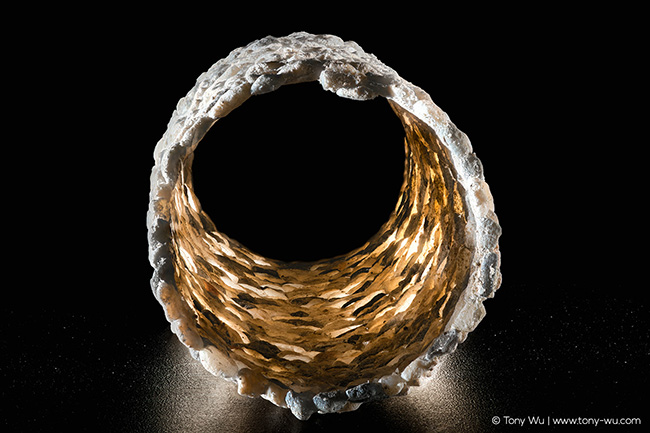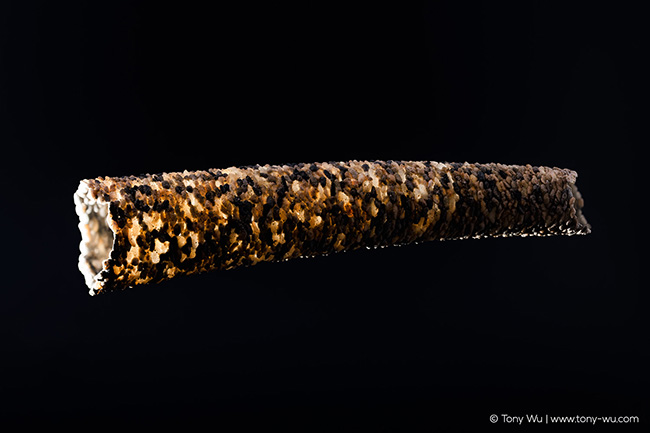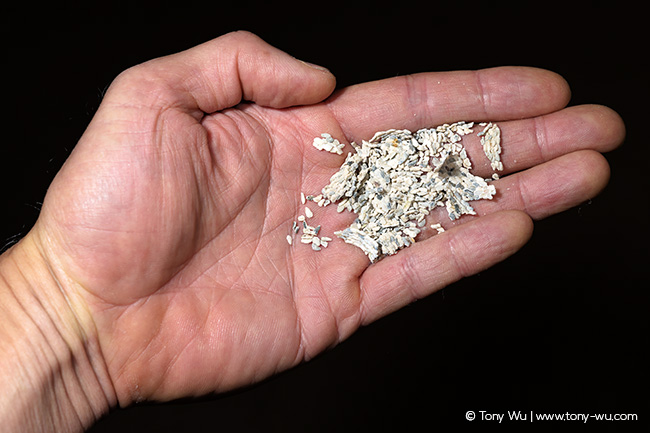A couple of weeks ago, I set myself the task of coming up with a suitable image for the year-end. A photo that conveyed a festive mood without the risk of being trite. Something different. Something of biological interest.
I wanted to have something circular to evoke a wreath. Illuminated as well, to convey the ambience of the season.
After much pondering, this is what I came up with:

It is the home of an ice cream cone worm. Yup, that's a real name, one of two commonly used appellations for marine polychaete worms belonging to the family Pectinariidae (ウミイサゴムシ科). They are also called trumpet worms, but for the purposes of being as silly as possible, I'm going with ice cream cone worm.
These segmented creepy crawlies are found in areas of fine sand or silt, where they make a living by sifting through the sediment for organic particles. The worms construct their intricate homes by gluing together sand. The walls are exactly one-grain-of-sand thick.
Here is a side view of the 9cm-long worm hole:

To get an ID for this specimen (which I picked up on a beach in the South Pacific last year), I consulted Leslie Harris, who is the collections manager for polychaetous annelids at the Natural Museum of History in Los Angeles. She is my go-to person for these types of things, partly because she is knowledgeable and kind enough to take time to reply, but also because she has a terrific sense of wonder and humour about nature.
I learned from Leslie that in life, the head of the worm protrudes from the wider end (left in photo above, 2cm diameter), which faces down into the substrate. The tail end (right in photo above, <1cm diameter) pokes above the sediment.
"Why this odd head-down, ass-up arrangement?" you might wonder.
In Leslie's words, "They dig up sand/mud/silt with their strong gold spines, swallow it, digest the organic bits, and poop shoot the clean sand out." (bold emphasis mine).
Poop shoot 😊
One of my goals for 2020 is to find a way to use the phrase "poop shoot" in a sentence, preferably while speaking in front of an audience in a totally serious setting. Who says science can't be fun?!
It did not occur to me until after I had finished photographing the worm hole that it might be cool to take a normal photograph for comparison. Unfortunately, the worm hole had dried out and crumbled as soon as I touched it.

Bummer, eh? But at least you get an idea of how delicate these constructs are, and how fragile the beauty of nature is.
Happy holidays, and best wishes for a wonder-filled 2020.